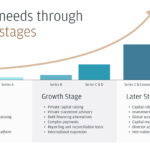Unlocking Education: My Personal Story with Tuition Assistance
I remember it like it was yesterday. The thick envelope arrived, crisp and official, with the logo of my dream university. My heart hammered against my ribs as I tore it open. Inside, nestled amongst welcome letters and campus maps, was the acceptance letter. Pure elation! Then, another page, stark white, with a number at the bottom that made my stomach drop faster than a roller coaster. The cost. The sheer, overwhelming cost of tuition.
My parents, bless their hearts, had always encouraged my dreams. But even with their hard work, that number felt impossible. It wasn’t just tuition; it was books, housing, food – the whole nine yards. I felt a cold dread creeping in. Was this it? Was my dream of higher education, of a future I’d worked so hard for, going to be snuffed out before it even began, simply because of money?
That’s when I first heard the phrase: "tuition assistance." It sounded so… bureaucratic. So complex. But my high school counselor, a kind woman with a reassuring smile, told me not to give up. "There’s help out there," she said, "you just need to know where to look." And so began my deep dive into the world of financial aid, a journey I’m incredibly grateful for, because it changed everything.
What Even Is Tuition Assistance? My Beginner’s Guide
Before I started looking, I had no clue what tuition assistance really meant. I thought it was just one big pot of money that either you got or you didn’t. Oh, how wrong I was! Think of tuition assistance as a big, friendly umbrella, with lots of different ways to keep the rain (of college costs) off your head. Here’s how I learned to break it down:
-
Grants: The "Free Money" You Don’t Pay Back (Hooray!)
This was the first ray of sunshine. Grants are often awarded based on financial need, meaning if your family doesn’t earn a lot, you might qualify. The best part? You don’t have to pay them back! It felt like a magical gift. The most common one I heard about was the Pell Grant, which comes from the U.S. government. Many states and even individual colleges also offer their own grants. My tip? Always, always, always apply for these first. -
Scholarships: Rewarded for Being You (and Your Efforts!)
Scholarships are another form of free money, but they’re usually awarded based on something specific. It could be academic merit (good grades!), a talent (sports, music, art), your background (first-generation college student, specific ethnicity), your major, or even just writing a really good essay about why you deserve it. I spent hours searching online scholarship databases and my university’s website. It felt like applying for a million mini-jobs, but each one held the promise of a lighter financial load. I even found one for being left-handed! Seriously, there are scholarships for almost everything. -
Work-Study Programs: Earning While You Learn
This was a cool option I discovered. If you qualify for financial need, you might be offered a work-study position. This means you get a part-time job, usually on campus, and your earnings help cover your educational expenses. I had friends who worked in the library, in the cafeteria, or as research assistants. It’s a great way to earn some money without having to commute off-campus, and it helps you balance your studies with work. Plus, you get valuable work experience! -
Student Loans: A Necessary Evil, But Not All Bad
Okay, so loans are the one type of assistance you do have to pay back, with interest. And yes, that can feel scary. But not all loans are created equal. I learned about:- Federal Student Loans: These are from the government and often have better interest rates and more flexible repayment plans than private loans. Some are "subsidized," meaning the government pays the interest while you’re in school. Others are "unsubsidized," meaning interest starts accruing right away.
- Private Loans: These come from banks or other financial institutions. They often have higher interest rates and less flexible terms. My counselor advised me to exhaust all other options (grants, scholarships, federal loans) before even looking at private loans. And I wholeheartedly agree.
-
Employer Tuition Reimbursement Programs: For the Working Student
This wasn’t directly applicable to me as a fresh high school graduate, but I learned about it for the future. Many companies offer to pay for part or all of their employees’ college tuition, especially if the degree is relevant to their job. It’s an amazing perk that allows people to go back to school or advance their education without taking on massive debt. If you’re already working, definitely ask your HR department about this!
My Journey to Finding Help: Where I Looked and What I Did
So, how did I navigate this maze of options? It wasn’t always easy, but here’s what I did:
-
The FAFSA: Your First and Most Important Step.
This acronym, FAFSA (Free Application for Federal Student Aid), became my best friend. It’s the gateway to most federal grants, federal student loans, and even some state and college-based aid. You fill it out online, providing information about your family’s income and assets. It felt a bit invasive, but it’s crucial. My biggest advice? Fill it out early! The aid is often first-come, first-served. Don’t wait until the last minute. -
Talk to the Financial Aid Office.
This was a game-changer. After I got my acceptance letter, I scheduled an appointment with the financial aid office at my dream university. They were incredibly helpful. They explained my "award letter" (the breakdown of aid they were offering me), answered all my questions about grants and loans, and even pointed me towards specific scholarships that were unique to their school. Don’t be shy – these people are there to help you! -
Online Scholarship Search Engines.
Websites like Fastweb, Scholarships.com, and College Board became my constant companions. I created profiles, inputting my grades, interests, and background, and they would match me with scholarships I might qualify for. It took time to sift through them, but every application felt like a step closer to my goal. -
Local Organizations and Community Groups.
I also looked locally. My town had a community foundation that offered scholarships to local students. My parents’ employers had programs. Even my church had a small scholarship fund. These smaller, local scholarships often have fewer applicants, increasing your chances. Don’t overlook your own backyard!
My Tips for You: What I Learned Along the Way
Looking back, here are the simple, honest tips I’d give anyone facing those daunting college costs:
- Start Early, Like, Really Early. The sooner you begin researching and applying for financial aid, the better your chances. Deadlines creep up fast!
- Fill Out the FAFSA (and Any State Forms) Without Fail. Seriously, this is non-negotiable for federal aid and often for state and institutional aid too.
- Don’t Self-Reject. Don’t assume you won’t qualify for something. Apply anyway! The worst they can say is no. You might be surprised.
- Be Organized. Keep track of applications, deadlines, login details, and contact information. A simple spreadsheet helped me immensely.
- Tailor Your Scholarship Applications. Don’t just copy and paste essays. Read the prompt carefully and make your application personal and specific to that scholarship.
- Proofread Everything. A sloppy application can make a bad impression. Get a friend or family member to read over your essays and forms.
- Ask for Help. If you’re confused, talk to your high school counselor, your college’s financial aid office, or even an adult you trust. There’s no shame in seeking guidance.
- Understand Your Award Letter. Once you get an offer of aid, make sure you understand every single line item. What’s a grant? What’s a loan? What are the terms? Don’t just sign on the dotted line without understanding.
The Real Impact: More Than Just Money
Getting tuition assistance didn’t just mean I could afford college. It meant so much more. It lifted a massive weight off my shoulders, and off my parents’ shoulders too. It meant I could focus on my studies, immerse myself in campus life, and truly make the most of my educational experience, instead of constantly worrying about how to pay for it all.
It gave me confidence, knowing that my hard work in high school had paid off, and that there were systems in place to support students like me. It taught me the value of persistence and thoroughness.
So, if you’re staring at those scary college costs, feeling that same knot in your stomach that I once did, please don’t give up. Tuition assistance might seem like a complex maze, but it’s a solvable one. There are people, programs, and opportunities designed to help you. Take a deep breath, do your research, ask questions, and apply for everything you can. Your dream education might be closer than you think, waiting for you to unlock it. Good luck!


